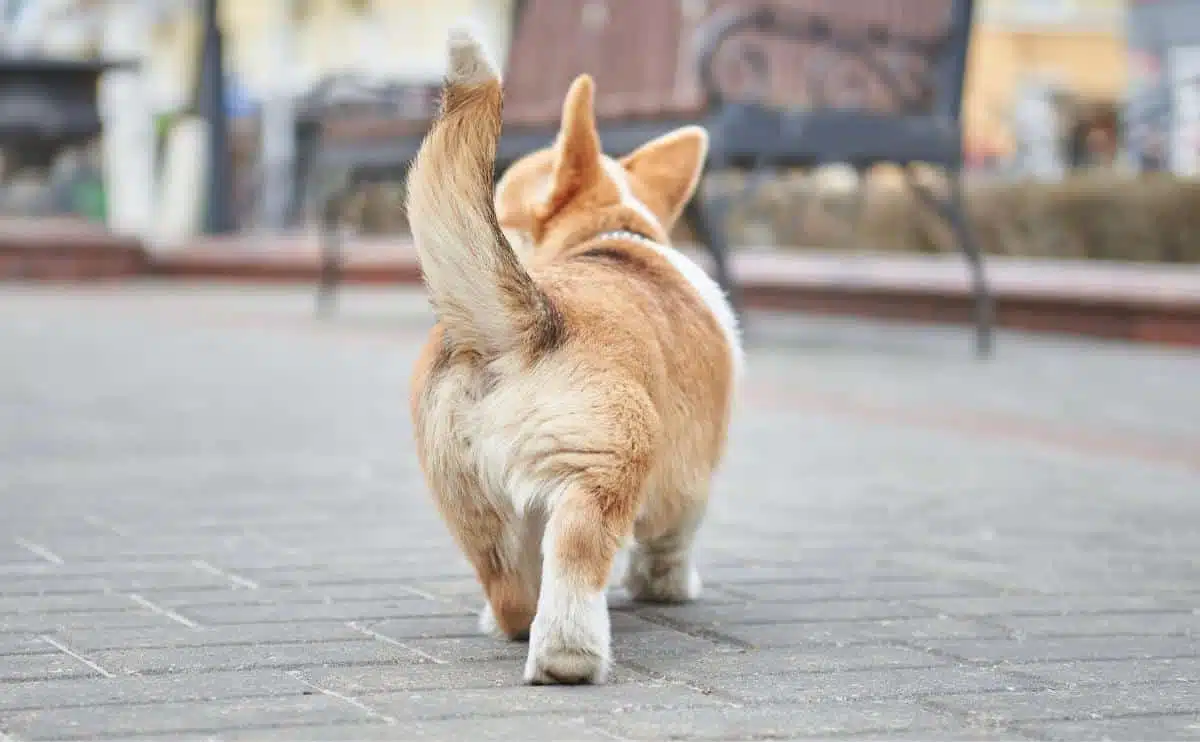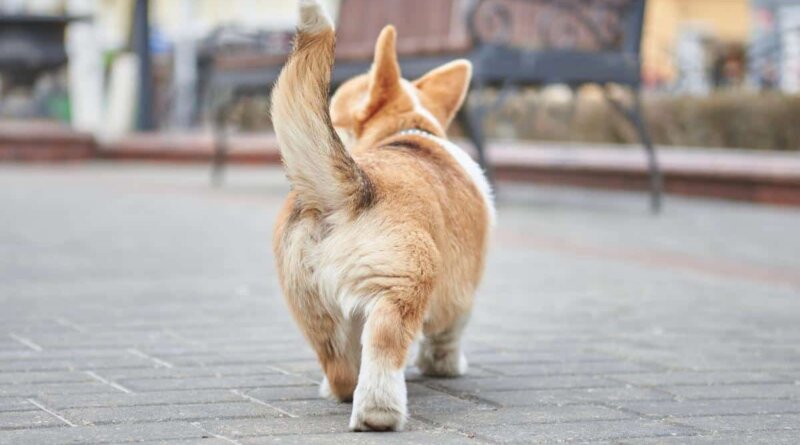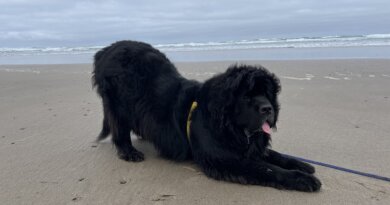Why Do Dogs Wag Their Tails? What Does A Wagging Tail Mean?
To keep the lights on, we receive affiliate commissions via some of our links. Our review process.

Most of us pup owners assume that when our dogs wag their tails it means they’re happy, but that’s not always the case. It turns out that dogs use their tails to communicate a variety of different feelings, some of which can be negative. So it’s important to know how to interpret tail wagging. What does it mean when a dog wags its tail? We’ve uncovered all the common reasons dogs wag their tails and what each can tell you about their current state of mind.
Why Do Dogs Wag Their Tails?
Do dogs wag their tails on purpose? Yes, dogs have full control of their tails and often consciously use them to communicate their moods. If humans had tails, we’d likely do the same thing. So what does a wagging tail mean? Our canine sidekicks wag their tails to express a variety of feelings.
How To Interpret Your Dog’s Tail Wags
Interpreting dog tail wagging meaning mainly depends on a pup’s tail position and wagging speed. However, you also have to take into consideration each dog’s tail position when a pup is relaxed, i.e. the starting point before a wag begins. While many canines’ natural tail position is hanging down near their heels, some breeds, like Beagles, naturally hold their tails upright and others have extremely short, or corkscrew, tails.
A fascinating 2018 review of previous scientific findings on dog behavior, illustrated the following observations about how dogs use their tails to communicate.
Tail Position
- Held high: conveys confidence, alertness to something or someone, or a “willingness to positively approach another individual, for example, greeting and playing.”
- Held low: a tail held low or tucked between the legs is a sign of fear, anxiety, or appeasement. Researchers believe dogs use this tail position because it decreases their body size.
- Held stiff: expresses that the dog is feeling threatened or anxious.
Wagging Speed
Researchers also believe that the speed of a tail wag conveys the emotional level of how a dog is feeling. For example, a slow wag could mean that a pup is feeling a moderate degree of happiness, anxiety, or fear (depending on the tail position). On the other hand, a fast wag means a high level of excitement or nervousness.
In a 2013 study published in Current Biology, scientists discovered that tail direction may be an indicator of a dog’s mood. They found that dogs tended to wag their tails slightly to the right to convey positive emotions, while a left-sided wag expressed more negative emotions. Researchers also believe that canines can detect the intent behind tail wags amongst other dogs.
Examples Of Tail Wagging & Emotional States
Here are some of the signs of several common emotional states you can decipher from a tail wag. However, keep in mind that it’s also equally important to pay attention to other body language cues your pup is exhibiting at the same time.
- Happy & Friendly: Why do dogs wag their tails when happy? Dogs hold their tails loosely and slightly upright with a moderate wag speed when they’re feeling happy and friendly.
- Excited: An excited dog may ramp up the speed of his happy wag. Usually, the faster the tail goes, the more excited a dog is. Some pups also wiggle their hips or their whole body when they’re feeling extremely excited.
- Curious: Many dogs hold their tails straight out in a horizontal position when they’re curious about something. When this is associated with a vigorous tail wag, it can mean that your pup is excited about his discovery.
- Aggressive: When some dogs are feeling threatened and aggressive, their tails become quite stiff and move into a vertical position (or arched over the back). The tail may or may not wag. This is a sign to stay away. Dogs showing signs of aggression need to be removed from the situation as soon as possible.
- Insecure or submissive: In contrast to the high tail height of a dog feeling aggressive, dogs who are feeling submissive move their tails to a lower position and may or may not have a slow wag. When the feeling of fear is heightened, many dogs will tuck their tail between their legs. In either case, this is a way dogs are communicating that they don’t want to be harmed.
How Do Dogs Wag Their Tails?
Canines control their tail muscles in the same way as other body parts, like their ears and legs. A dog’s brain sends a signal to the tail muscle to manipulate its movement in varying ways. Our furry friends not only can wag their tails at will, but they also can consciously control the position and speed.
Did You Know?
Frequently Asked Questions
Here are some questions owners often ask about tail wagging.
Can Dogs Be Happy Without Wagging Their Tails?
Yes. Like most canine behaviors, some dogs use their tails much more than others to communicate. And some breeds, like Golden and Labrador Retrievers, are naturally more robust waggers than others. For example, dogs with corkscrew tails, such as French Bulldogs, Pugs, and Boston Terriers, simply have a harder time wagging due to their tail conformation. Just because your dog isn’t wagging her tail, that doesn’t mean she’s unhappy. Your pup may use other body language to show happiness.
Why Has My Dog Stopped Wagging His Tail?
If you’ve noticed that your dog’s tail isn’t wagging the way it used to or seems limp, she could have limber tail. This condition most often occurs due to a tail muscle sprain or strain from overexertion while swimming and excessive exercise.
Some other issues that could cause a limp tail include trauma, impacted anal glands, and intervertebral disc disease (IVDD). If you’re concerned about your furry friend’s tail movement, contact your vet as soon as possible.
When Do Puppies Start Wagging Their Tails?
As adorable as it would be, newborn puppies don’t wag their tails. Most don’t begin until they’re around three to four weeks old. Most experts believe this delay occurs because tail wagging is a socially learned behavior from a puppy’s mother.
What Is A “Flagging” Tail? (Video)
Flagging is when a dog holds his tail in a high position and waves it stiffly back and forth. This type of wag means that a dog is perceiving a threat. The flagging movement is one way dogs try to make themselves look bigger and more threatening. Check out this brief video to see what a flagging tail looks like so you can recognize this important cue.
Understanding Dog Body Language
Tail wagging is only one of many ways dogs use their bodies to communicate with us and other canines. See our guide to dog body language to learn about all the signs that our pups show when they’re feeling, excited, fearful, aggressive, submissive, and more. It also includes a brief guide on interpreting the sounds your dog makes.
Tagged With: Trivia




